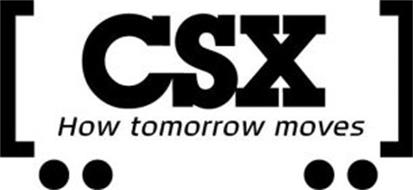The railroad, which has introduced distributed power in intermodal service over the past four months, aims to double its use of distributed power over the next year, says Jamie Boychuk, senior vice president of network operations.
“We’re targeting some of our longer and heavier corridors,” Boychuk says.
Distributed power is the railroad practice of placing one or more locomotives within or at the end of a train’s consist to reduce in-train stresses related to braking and pulling, as well as help move trains more efficiently on territories with significant grades. These locomotives are remotely controlled by the crew from a lead locomotive.
CSX sees service, efficiency, and safety benefits from distributed power.
In January, when Ed Harris joined the railroad as executive vice president of operations, distributed power was in minimal use on CSX and was limited to three or so coal trains per day, at most, Boychuk says.
“We actually almost wound down to nothing,” he says.
Now 28 to 32 trains across the system are scheduled to use distributed power every day, including a dozen intermodal trains, 14 merchandise trains, and up to six coal trains.
Harris has been a proponent of distributed power since his days at Canadian National and Canadian Pacific, which have long spread power throughout trains to improve train handling, save fuel, reduce train pull-aparts, and speed brake-charging times.
After increasing distributed power use in the coal fields, CSX began experimenting with distributed power on intermodal trains, says Boychuk, a CN veteran.
CSX first tested distributed power on Chicago-Jacksonville intermodal trains Q025 and Q026, which typically run between 12,000 and 14,000 feet long.
“This obviously helped with the handling of it as well as maintaining track speed on some of those days when it was long and heavy,” Boychuk says.
The longest, heaviest intermodal trains on all three legs of the CSX triangle linking Chicago, New Jersey, and Jacksonville now regularly run with distributed power.
In the past couple of months, CSX has introduced distributed power to the manifest network, Boychuk says.
The rollout of distributed power has enabled CSX to reduce train starts by moving traffic in longer trains. And fewer trains, as well as fewer meets in single-track territory, reduces congestion and improves transit times, Boychuk notes.
Distributed power has enabled CSX to handle as much as 30 percent more tonnage per train with the same number of locomotives and horsepower, Boychuk says.
Trains operated in distributed power mode also can better maintain track speed than when all the power is on the head end.
“Just by us going two on the head end, one in the middle, we were able to pick up track speed without having to add any horsepower and maintain the same tonnage,” Boychuk says.
CSX also identified trains that struggled to maintain track speed with two units. Shifting to distributed power brought the trains up to speed without having to add a third unit to the consist or reduce the tonnage, Boychuk says.
With colder weather approaching — and its negative impact on brake-charging times — CSX is focusing on adding distributed power to trains on its northern tier, the former Baltimore & Ohio out of Chicago and the former New York Central Water Level Route east of Cleveland.
“We find that when you put a train together in the cold weather, distributed power cuts down more than half the time of pumping air when you make any type of a lift or double up,” Boychuk says.
For all the service and efficiency benefits of distributed power, it’s safety improvements that are the technology’s biggest advantage, Boychuk says.
The longer and heavier a consist, the more prone the train becomes to separations en route.
“Train separations can occur for many different reasons, and when they do … it could cause a derailment,” Boychuk says.
CSX prioritized distributed power use on trains and territory where separations were more common.
“We very, very seldomly have a [distributed power] train that has a separation out there compared to a conventional” motive power setup, Boychuk says.
“We really wanted to go after some train reductions, moving more tonnage and more footage,” Boychuk says. “But that safety aspect is even greater than anything for us.”
CSX has about 700 locomotives equipped to run in distributed power mode, he says.














